Dynamically Update Invoke Connections at Runtime
You can dynamically update the invoke connection to use at runtime. This feature lets you use a single integration to send requests to multiple end systems or instances of the same application and eliminates the need to create a separate integration for each endpoint or multiple invoke connections configured in a switch action in a single integration.
Dynamic Connection Capabilities
Dynamic connections provide the following capabilities.
- Connections can be local to a project, shared between projects, or standalone (that is, available globally and not under the context of a project).
- Each connection can be defined with different properties and security policies. For example, an FTP over SSL invoke connection configured with the FTP Public Key Authentication security policy at design-time can be overridden at runtime by an sFTP connection configured with the FTP Server Access Policy security policy.
- A connection can be overridden with the connectivity agent. For example, an FTP Adapter invoke connection configured without the connectivity agent at design-time can be overridden at runtime by an FTP Adapter invoke connection configured with the connectivity agent.
- The runtime connection to use is defined by a
property in the payload of the incoming message or through
the result of a lookup table function.
Note:
Lookup table-based expressions are supported only in the design-time lookup wizard and not in the mapper at runtime. - For any invoke connection, you can specify an XPath expression or optionally a lookup table function result on the source payload. Once evaluated against the actual data, the value of the connection ID to use at runtime is provided for that particular invoke connection.
- The invoke connection used dynamically can be tracked and monitored in the activity stream at runtime.
Configure and Use a Dynamic Connection
This example walks you through how to create and use a dynamic connection across two projects. You can also create and use dynamic connections in a single project or in standalone environments (that is, outside of projects).
For this example, two projects are created.

- Integration dyn conn demo ftp e2e.
- Connection FTP 138 Keybased Shared: This key-based connection (FTP Public Key Authentication) is shared across both projects. The use of this connection dynamically at runtime in Dyn Conn Project 1 is demonstrated in this section.
- Connection FTP 147 Project 2: This is a user name/password-based connection (FTP Server Access Policy).
- Connection FTP 138 Project 2: This is a user name/password-based connection (FTP Server Access Policy).
- Connection Rest Trigger: This connection triggers the integration.
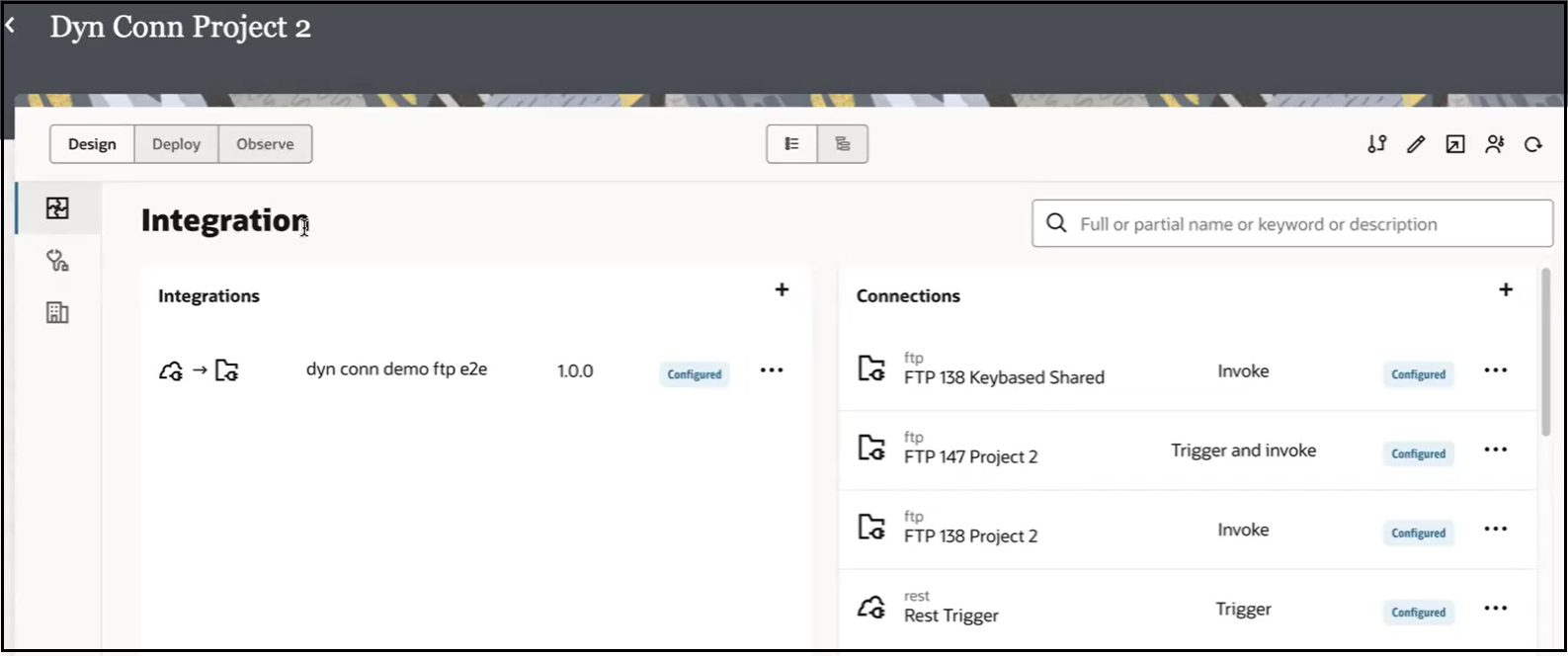
- Integration dyn conn demo ftp.
- Connection FTP 138 Keybased: This connection references the shared key-based connection (FTP Public Key Authentication) in the Dyn Conn Project 2 project.
- Connection FTP 147 Project 1: This is a user name/password-based connection (FTP Server Access Policy).
- Connection FTP 138 Project 1: This is a user name/password-based connection (FTP Server Access Policy).
- Connection Rest Trigger: This connection triggers the integration.
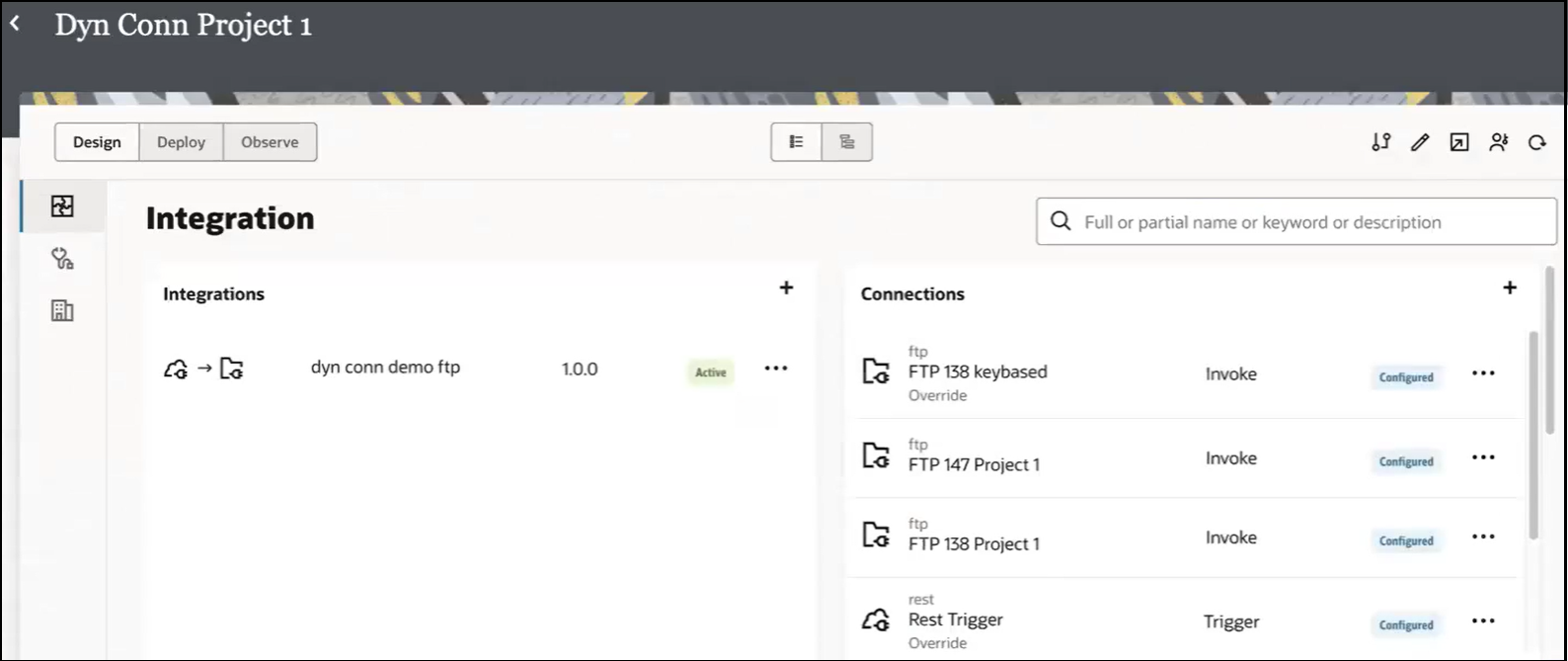
- In Dyn Conn Project 2, open
the dyn conn demo ftp e2e integration
for editing.
Note that the FTP 138 Project 2 FTP Adapter invoke connection is being used in the design.
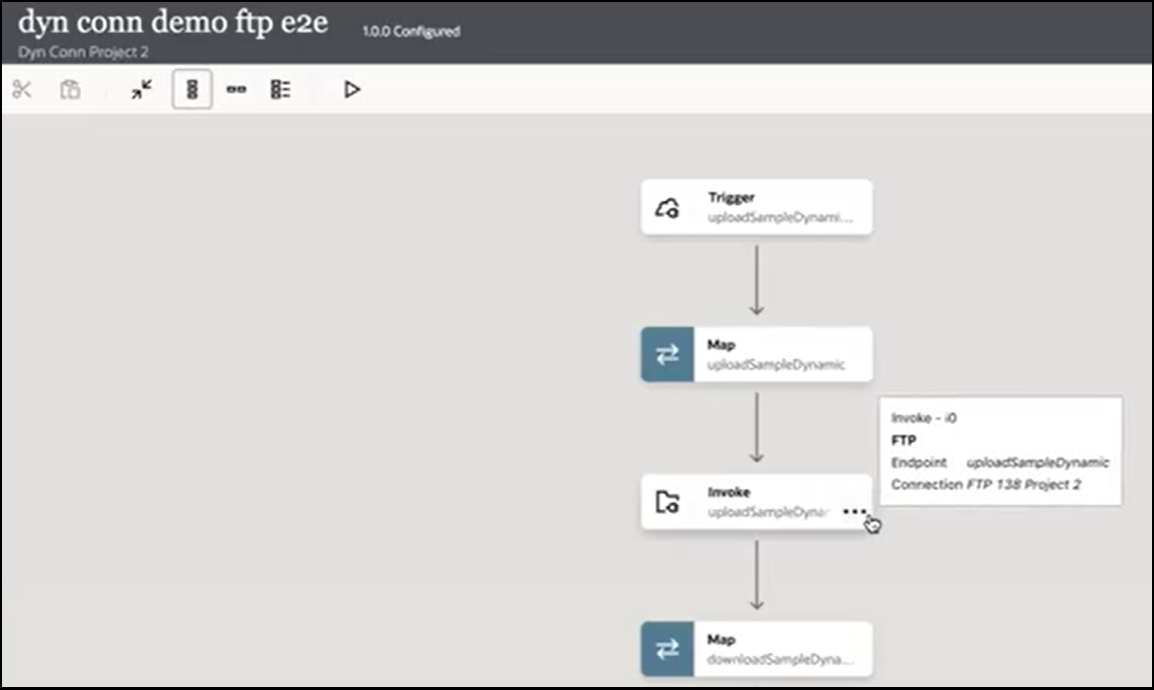
- Open this invoke connection for editing in the integration canvas.
- On the Basic Info page, click Continue.
- On the Dynamic Connections page, select
Enable Dynamic Connection to
specify a dynamic connection ID to use at runtime.
The Dynamic Connection ID field is displayed.
- Click Switch to Developer
View
 .
.
- Specify a dynamic connection ID in either
of two ways.
- Input sources: Click to pass the connection ID as an XPath expression with the dynamic-connection-id query parameter. The XPath expression evaluates to the connection ID of the dynamic invoke connection used at runtime.
- Functions: Click to use a lookup table function to pass different connection IDs representing the different regions.
For this example, the dynamic-connection-id XPath expression is dragged to the field.

- Save the updates.
It's time to run the integration.
- Go to the Dyn Conn Project 1 project.
- Hover over the dyn conn demo ftp integration to run.
- From the Actions
 menu, select Run.
menu, select Run.
- In the Body tab, upload the payload file to use (for this example, named sample.json).
- In the URI parameters tab,
specify the following:
- file-name: File name of the payload.
- directory: Target directory in which to write the file.
- dynamic-connection-id: FTP Adapter invoke connection to
use dynamically at runtime. Begin typing letters
to filter the display of invoke connections
available for selection. For this example,
FTP 138 Keybased is
selected. This is the shared invoke connection on
which you defined the dynamic XPath expression in
Step 7. If you leave this field
blank, the connection added at design time, and
not a dynamic connection, is used.
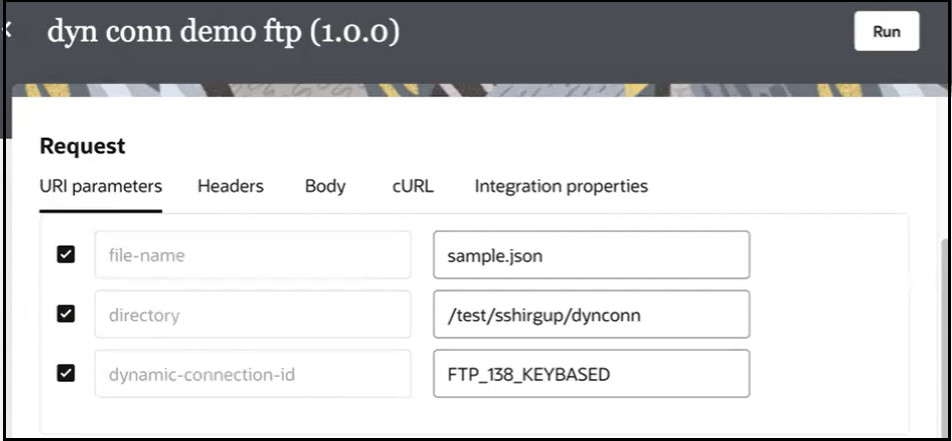
- Click Run.
- Expand the connection and wire message in the
activity stream.
A connection message indicates the dynamic connection was used instead of the design-time connection. The wire message identifies the connection ID used (FTP 138 Keybased) and connection type (ftp) used.
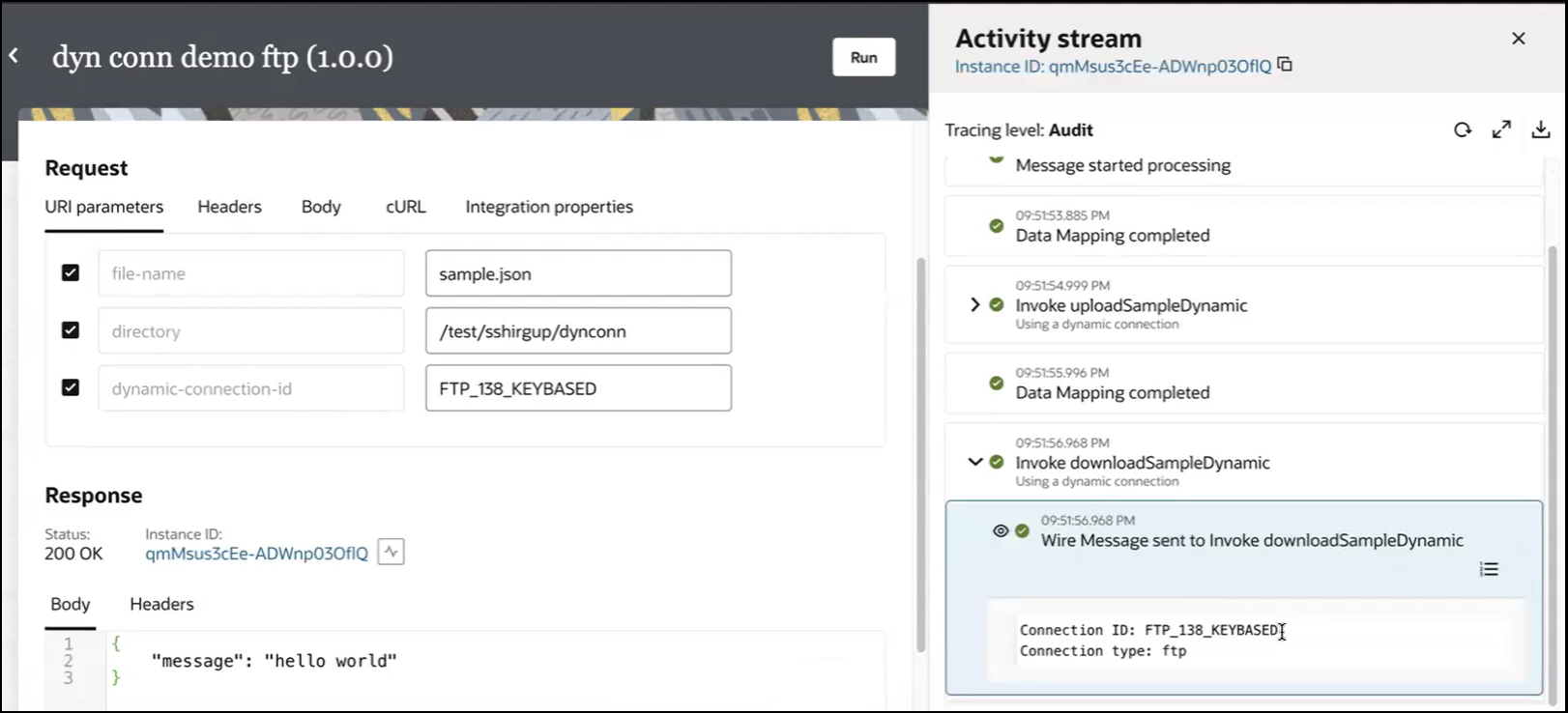
Watch a video to learn more: